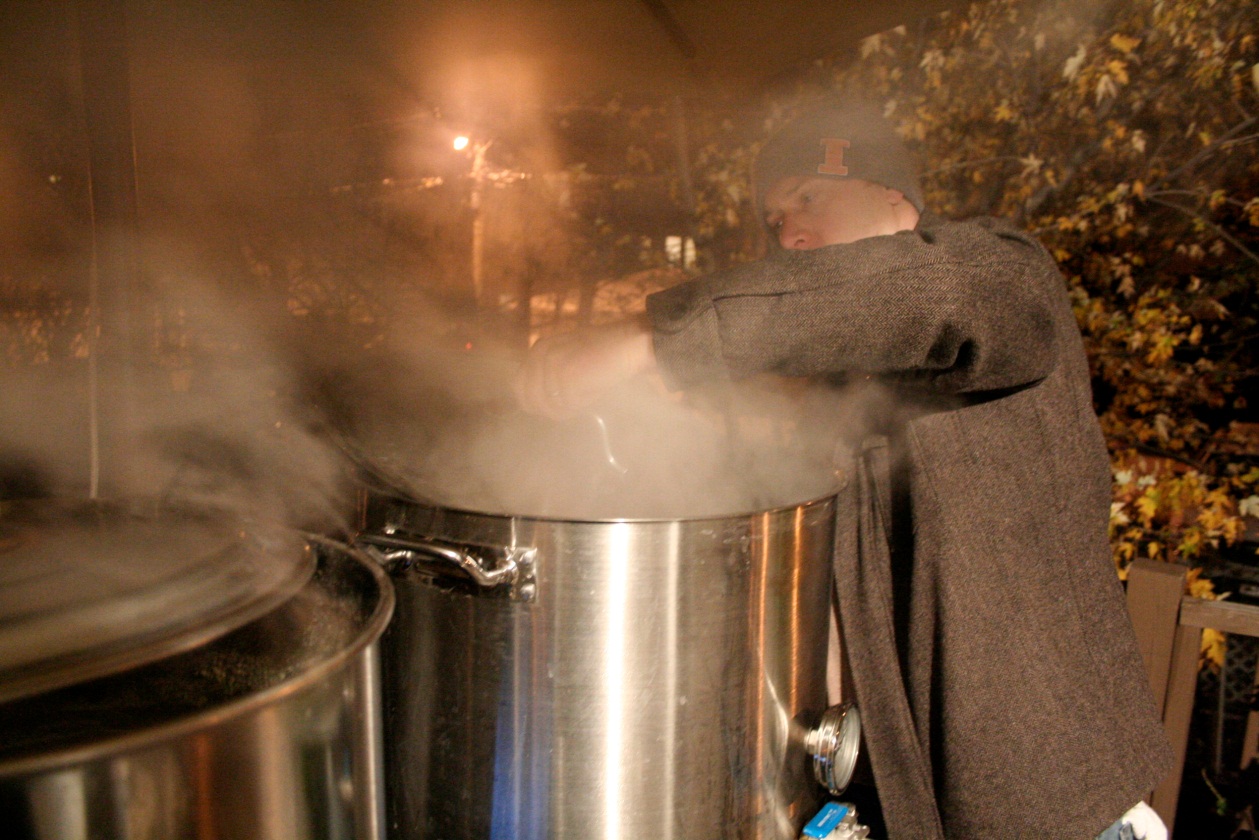By Jason Addington | February 20, 2013
Just before the holidays, a few of us at Lakota got together at my house to eat some pizza and brew a little beer. It was a fairly cold night to be brewing on my back deck, but with a few layers and a few…umm, beverages, we were able to stay warm and complete several batches of extract beer. Over the course of the night Mike brewed an IPA, Justin a Rye Ale, Zac a Nutbrown Ale, I tackled the Hefeweizen, and Fischer, well he was a great help. The whole process from start to finish took about three hours with clean-up.
We all have been home brewing for a few years now (Fischer included) with equal amounts of success and failures. As soon as I could put Fischer in a Baby Bjorn, he began helping me. I guess you could say he has been brewing his whole life. Ales are typically the easiest beers to start off with, because they do not require colder fermentation temperatures.
Home brewing is a fairly simple process. When someone asks me about home brewing, I often compare extract brewing to making a box of macaroni and cheese; you have your basic ingredients (specialty grains, hops, extract syrup and water), and all you need to do is add them at the right time. The most difficult part of the process is making sure that you keep anything that comes into contact with the wort (unfermented beer) clean and sanitized. At the end of the day, if everything went according to plan, you will have five gallons of beer in about four to six weeks.
Several weeks later, we were able to enjoy our success with the office and with our friends.
Cheers!
If anyone is interested in home brewing, I listed several resources to help you get started. Good luck!
(Click on the photos to see the brewing slideshow.)



